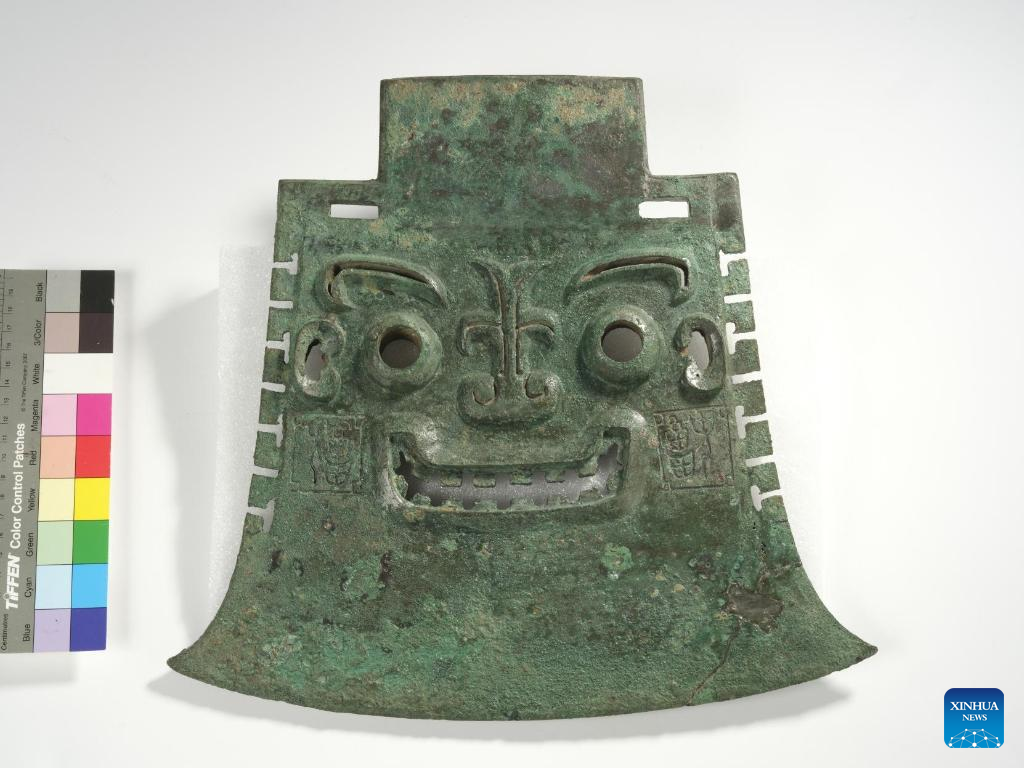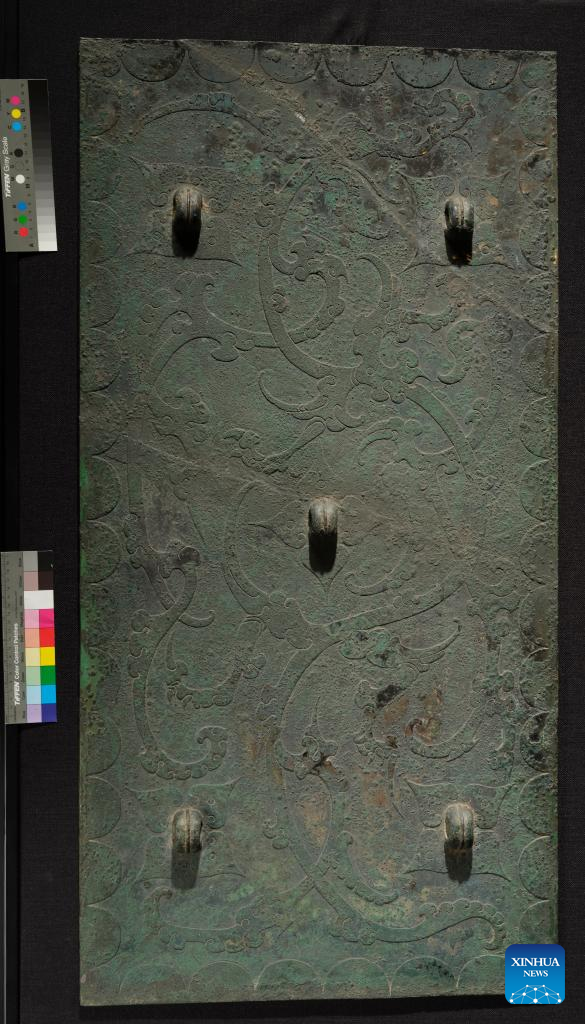Exhibition on China's history of rites concludes in Beijing
 0 Comment(s)
0 Comment(s) Print
Print E-mail Xinhua, February 20, 2024
E-mail Xinhua, February 20, 2024

This photo taken on Oct. 10, 2023 shows a bronze yue axe with inscription of "ya chou" in Beijing, capital of China. It was unearthed from a Shang Dynasty (1600 BC-1046 BC) noble's tomb in Qingzhou of east China's Shandong Province. A special exhibition, titled "The Evolution of Rites in the East: The Essence of Shandong's Ancient Civilization," concluded in Beijing on Sunday.
The exhibition, featuring nearly 440 sets of cultural artifacts from east China's Shandong Province, is the largest exhibition the Tsinghua University Art Museum has ever held. (Tsinghua University Art Museum/Handout via Xinhua)
BEIJING, Feb. 19 (Xinhua) -- A special exhibition, titled "The Evolution of Rites in the East: The Essence of Shandong's Ancient Civilization," concluded in Beijing on Sunday.
The exhibition, featuring nearly 440 sets of cultural artifacts from east China's Shandong Province, is the largest exhibition the Tsinghua University Art Museum has ever held.
A Neolithic dou, a food vessel that contains the origin of the Chinese character for "rite," and a gray Neolithic pottery zun, a ritual wine vessel, illustrate the early development of China's 5,000-year-old civilization. Amethyst and agate ornaments from the Spring and Autumn Period (770 B.C.-476 B.C.) and the Warring States Period (475 B.C.-221 B.C.), and jade wares that may have been used in rituals by Qin Shi Huang, China's first emperor, offer insights into people's understanding of rites in ancient times.
Tan Shengguang, the exhibition's curator, noted that Shandong boasts a large number of cultural relics, which are important parts of traditional Chinese culture and inseparable from the origin and development of the Chinese understanding of rites.
In recent years, the Tsinghua University Art Museum has held a series of exhibitions on the origins and historical process of the Chinese civilization, including "Everlasting like the Heavens: The Cultures and Arts of Zhou, Qin, Han and Tang" in 2019 and "Splendor of Huaxia: The Essence of Shanxi's Ancient Civilization" in 2021. Enditem

This photo taken on Oct. 10, 2023 shows a rectangular bronze mirror used by a Prince of Qi during the Western Han Dynasty (202 BC-25 AD) in Beijing, capital of China. It was unearthed in Zibo of east China's Shandong Province. A special exhibition, titled "The Evolution of Rites in the East: The Essence of Shandong's Ancient Civilization," concluded in Beijing on Sunday.
The exhibition, featuring nearly 440 sets of cultural artifacts from east China's Shandong Province, is the largest exhibition the Tsinghua University Art Museum has ever held. (Tsinghua University Art Museum/Handout via Xinhua)


